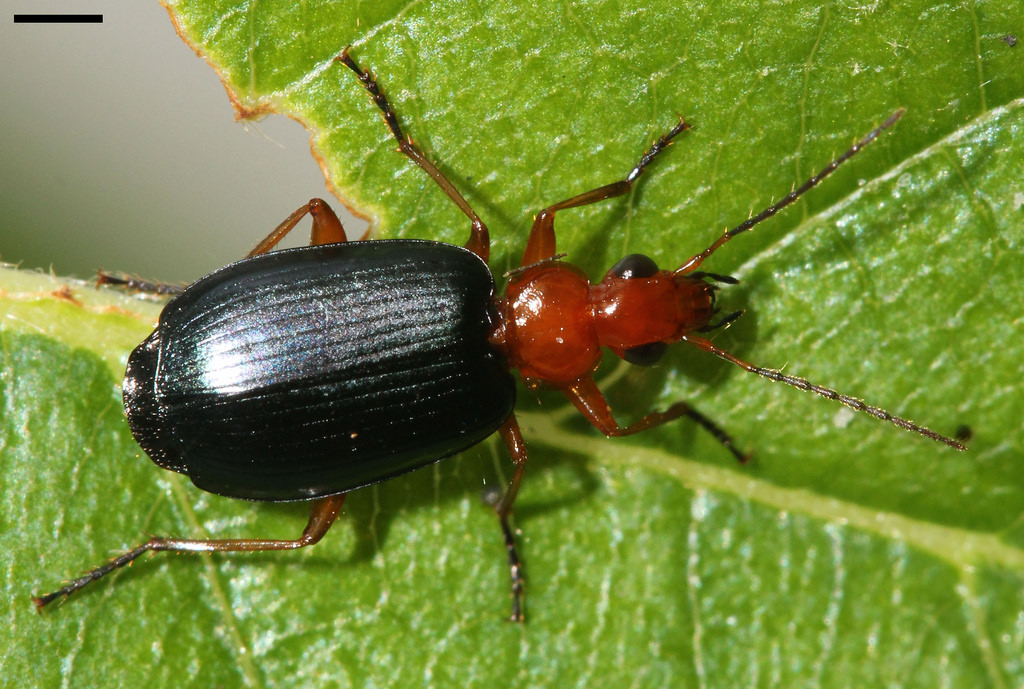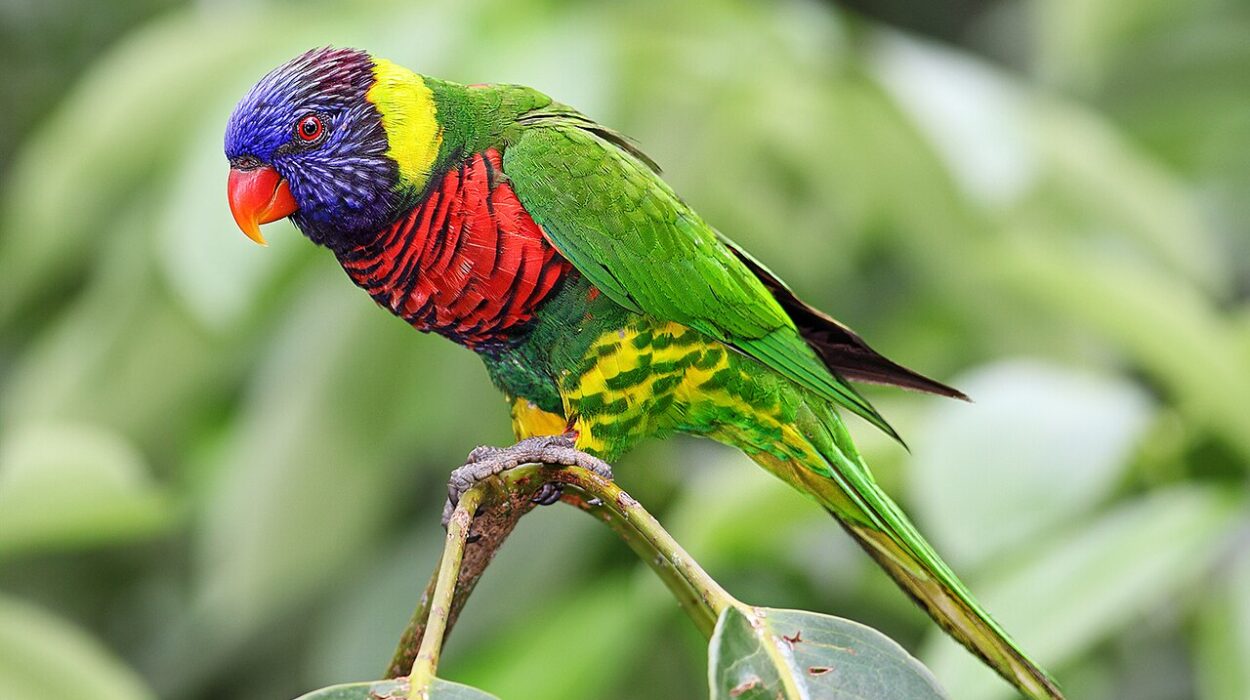The world of insects is a universe of ingenuity, full of creatures so small they seem powerless—until you see how they defend themselves. Beneath the buzzing wings and delicate shells lies a staggering arsenal of survival tactics. Some insects explode, others spit boiling chemicals, and a few even fake their own deaths with Oscar-worthy performances.
To survive in a world where everything wants to eat you, insects have evolved some of the strangest and most brilliant defense mechanisms on Earth. Their weapons aren’t just physical—they’re chemical, behavioral, and psychological. From deception to destruction, from beauty to terror, these tiny warriors show that evolution doesn’t just favor the strong—it favors the clever.
Here are ten of the weirdest, wildest, and most fascinating insect defense mechanisms that science has ever uncovered.
1. The Bombardier Beetle – The Chemical Artillery Expert
Imagine a creature so small it can fit on your fingertip, yet capable of firing a boiling chemical explosion at its enemies. That’s the Bombardier beetle—nature’s living flamethrower.
When threatened, this beetle mixes two chemical compounds stored separately in its abdomen—hydroquinone and hydrogen peroxide. Once combined, they react violently in a special chamber lined with enzymes, reaching temperatures of over 100°C (212°F). The beetle then ejects this boiling liquid through a tiny nozzle near its rear end, often with audible popping sounds.
What’s truly astonishing is the beetle’s control over its weapon. It can aim in multiple directions, firing in rapid bursts to confuse predators. Frogs, spiders, and even humans learn quickly that this tiny creature is not to be trifled with.
Scientists have studied the Bombardier beetle for years, inspired by its precision chemistry. Its defense system is so efficient that it has influenced designs in engineering and robotics. A natural marvel, the Bombardier beetle turns chemistry into survival—and artistry.
2. The Assassin Bug – The Corpse Collector
If insects could star in horror movies, the Assassin bug would be the main villain. Known for its brutal hunting style, this predator has a defense mechanism as gruesome as it is effective: it wears the corpses of its victims.
After killing its prey—often ants or other insects—the Assassin bug uses its straw-like mouthpart to suck out the soft tissues, leaving hollow exoskeletons behind. Then, it glues these empty shells onto its back, layer upon layer, creating a morbid shield of corpses.
This disguise serves multiple purposes. The scent of the dead confuses predators, making the bug less detectable, and the spiny texture of the carcass armor deters attacks. Some species even use the remains as camouflage to infiltrate ant colonies undetected.
It’s a defense strategy that embodies evolution’s dark creativity—turning death into protection, horror into survival.
3. The Malaysian Exploding Ant – The Martyr of the Jungle
Among the trees of Borneo, a humble ant has taken self-sacrifice to an extraordinary level. The Malaysian exploding ant (Colobopsis explodens) literally kills itself to protect its colony.
When threatened, worker ants rupture special glands inside their bodies, releasing a sticky, toxic fluid that sprays onto the attacker. The explosion kills the ant instantly but can immobilize or kill predators many times its size.
This kamikaze defense is a collective strategy—each sacrifice buys precious seconds for the colony to regroup or escape. Observing these ants feels like watching soldiers in miniature, bound by loyalty stronger than instinct itself.
Their defense is chemical warfare fused with heroism. They embody the extremes evolution can reach when survival depends not on individuals, but on community.
4. The Hawk Moth Caterpillar – The Snake Impersonator
When you first see a Hawk Moth caterpillar, it’s just another chubby, harmless worm munching on leaves. But corner it, and you’ll witness one of the most convincing acts of mimicry in nature.
The caterpillar inflates its front segments and curls its body, transforming its head into a near-perfect imitation of a snake’s face—complete with false eyes and scales. It sways and lunges just like a real serpent, fooling birds, lizards, and mammals into retreating.
This isn’t mere resemblance—it’s performance art. The caterpillar uses posture, color, and movement to sell the illusion. It has no venom, no bite, no claws—just the power of mimicry.
In the theater of evolution, the Hawk Moth caterpillar is a master actor. Its defense isn’t aggression—it’s illusion, proving that sometimes the best way to survive is to pretend to be something terrifying.
5. The Spittlebug – The Foam Fortress Builder
Few defenses are as bizarre or as adorable as that of the spittlebug. Found in gardens and meadows around the world, these tiny insects cover themselves in frothy bubbles that look like spit.
But this “spittle” isn’t random—it’s a carefully engineered protective foam. The nymph (juvenile spittlebug) mixes plant sap with air and secretions from its abdomen to create a sticky bubble shield.
This foamy armor hides the insect from predators like birds and spiders, maintains moisture to prevent dehydration, and even insulates against temperature changes. To most animals, the foam looks unappetizing, and that’s exactly the point.
Inside this miniature bubble bath, the spittlebug grows in peace—safe, snug, and invisible. In a world of predators, its best weapon is comfort disguised as camouflage.
6. The Devil’s Flower Mantis – The Floral Assassin
If insects had deities, the Devil’s Flower mantis would be one of them. Native to Africa, this stunning mantis looks like a living orchid—an illusion so beautiful it deceives both prey and predator.
When resting, its petals unfold into a mesmerizing display of pinks, whites, and purples. Small insects approach, thinking they’ve found a flower rich with nectar. Instead, they meet the mantis’s spiked forelegs and lightning-fast strike.
But the floral disguise also serves as a defense mechanism. Birds and reptiles often overlook the mantis, mistaking it for a harmless blossom swaying in the breeze. When threatened, it spreads its legs and wings, revealing a sudden flash of bright colors—startling potential attackers and buying time to escape.
In the Devil’s Flower mantis, beauty and death coexist perfectly. Its defense is deception wrapped in elegance—a reminder that in nature, appearances are the ultimate weapon.
7. The Stink Bug – The Chemical Repugnant
If you’ve ever crushed a stink bug, you know the smell: pungent, sharp, unforgettable. This foul odor isn’t just unpleasant—it’s an evolutionary masterpiece.
Stink bugs, or shield bugs, possess specialized glands between their legs or on their thorax. When threatened, they release a volatile chemical mixture that smells like rancid almonds, coriander, or skunk spray, depending on the species.
The stench isn’t just revolting; it’s effective. Birds, reptiles, and mammals that try to eat them often spit them out instantly and remember the smell for life. Some stink bugs can even project their chemical spray several inches, targeting specific threats.
The compounds are so strong that they can corrode small insect exoskeletons and cause irritation in humans. What’s fascinating is how universal this tactic is—many unrelated insects, like rove beetles and certain caterpillars, have evolved similar stink-based defenses.
For the stink bug, the message is simple: you can catch me, but you’ll regret it.
8. The Antlion Larva – The Sand Trap Predator
Buried beneath fine sand, the antlion larva lies in wait. It builds a perfect conical pit, smooth and steep, and hides at the bottom with its massive jaws exposed. To passing ants and insects, the pit looks like an innocent dip in the sand—until they slip.
When prey tumbles in, the antlion flicks sand upward, making the slope collapse and dragging its victim down into its jaws. But what happens when the tables turn and it becomes the target?
The antlion has a defensive trick just as remarkable as its hunting skill. If attacked, it plays dead, remaining perfectly motionless for long periods. Some species even twitch slightly to simulate lifelessness, discouraging predators that prefer fresh prey.
Combined with its sandy camouflage, the antlion becomes nearly invisible. Its defense lies not in fighting, but in vanishing—outwitting danger through patience and deceit.
9. The Walking Stick Insect – The Master of Disappearing Acts
At first glance, the walking stick doesn’t look like an insect at all—it looks like a twig. Long, slender, and motionless, it’s one of the greatest masters of camouflage on Earth.
When threatened, it freezes completely, blending into branches so perfectly that predators’ eyes slide right past it. Some species take the deception further, swaying gently to mimic twigs moving in the breeze.
Others have evolved more dynamic defenses. The Anisomorpha buprestoides, known as the “Devil Rider” or “Florida Stick Insect,” can spray a chemical irritant from its thorax up to 30 centimeters (a full foot) away. The compound causes pain and temporary blindness if it reaches the eyes of a predator—or an unlucky human.
The walking stick proves that invisibility isn’t science fiction—it’s biology perfected. Its defense is stillness, precision, and timing—a lesson in how survival can be silent and spectacular at once.
10. The Giant Hornet – The Heated Defense of the Hive
The Asian Giant Hornet—sometimes sensationalized as the “murder hornet”—is one of the most formidable insects in existence. With its massive mandibles and venomous sting, it’s a fearsome predator, especially to honeybees.
But Japanese honeybees have developed one of the most ingenious defense mechanisms in nature to counter this giant killer. When a hornet scout enters their hive, the bees swarm it—not to sting, but to cook it alive.
Hundreds of bees pile onto the hornet, vibrating their flight muscles rapidly to generate heat. The temperature inside the ball rises to around 46°C (115°F)—hot enough to kill the hornet but just below the bees’ own lethal limit.
This collective act of defense is both strategic and sacrificial. A single hornet can destroy a hive, but together, the bees create a living oven that turns the predator’s aggression into its downfall.
It’s not just a defense—it’s a triumph of cooperation and intelligence, a reminder that even the smallest creatures can achieve the extraordinary through unity.
The Science Behind Insect Defenses
Insects may be tiny, but evolution has turned them into some of the most inventive chemists, architects, and illusionists on the planet. Their defenses arise from millions of years of natural selection, each adaptation a response to predators, climate, and competition.
Many defenses rely on chemical weaponry—acids, toxins, pheromones, and enzymes evolved for precision use. Others depend on behavioral evolution—mimicry, camouflage, and collective defense strategies. These mechanisms are not random quirks; they are refined solutions to the oldest problem in biology: how to survive.
What’s even more fascinating is how these defenses have inspired human innovation. The Bombardier beetle’s chemical ejection system has influenced micro-explosive technology. The honeybee’s thermal defense offers insights into swarm robotics and collective behavior. Evolution’s creativity is not just for survival—it’s a blueprint for invention.
The Poetry of Survival
Insects remind us that survival is both brutal and beautiful. Their defenses are not born from malice but from necessity, from the eternal dance between predator and prey. Each strange adaptation—explosions, disguises, stenches, and sacrifices—tells a story of resilience.
When you watch a mantis sway like a flower or a caterpillar puff itself into a snake, you’re witnessing evolution at its most artistic. Beneath every fluttering wing and every delicate step lies a mindless yet masterful strategy, crafted by time and chance into something astonishing.
These tiny beings, so often overlooked, live by rules that are as ancient as life itself: adapt, outwit, survive. And in doing so, they reveal a truth about all living things—no matter how small, life will always find a way to defend itself, to endure, and to amaze.
In the vast, intricate theater of evolution, insects are both the performers and the playwrights—telling the story of survival with weapons forged from imagination itself.






